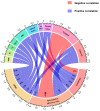Analysis of Potential Vitamin D Molecule Biomarkers: Association of Calcitriol and Its Hydroxylation Efficiency Ratio with Cardiovascular Disease Risk in Rheumatoid Arthritis Patients
- PMID: 38397875
- PMCID: PMC10886495
- DOI: 10.3390/biomedicines12020273
Analysis of Potential Vitamin D Molecule Biomarkers: Association of Calcitriol and Its Hydroxylation Efficiency Ratio with Cardiovascular Disease Risk in Rheumatoid Arthritis Patients
Abstract
Rheumatoid arthritis (RA) is a multifactorial autoimmune disease in which hypovitaminosis D by calcidiol quantification has been associated with disease severity. However, other vitamin D molecules could be implicated in RA pathophysiology and its comorbidities such as cardiovascular disease (CVD), which impacts the severity and mortality of RA patients. This study aimed to assess the relationship between calcidiol, calcitriol, its hydroxylation efficiency ratio, and the soluble vitamin D receptor (sVDR) and clinical and CVD risk variables to propose potential vitamin D molecule biomarkers for RA. A cross-sectional study of females was conducted on 154 RA patients and 201 healthy subjects (HS). Calcidiol, calcitriol, and the sVDR were measured in blood serum, and vitamin D hydroxylation efficiency was estimated using the calcitriol/calcidiol ratio score. CVD risk was calculated by the high-sensitivity C-reactive protein (hs-CRP) cutoff values. Disease activity was evaluated with the Disease Activity Score for 28 standard joints (DAS28-CRP). Results: The hydroxylation efficiency ratio and calcitriol serum levels were higher in RA patients with hypovitaminosis D (p < 0.001). Moreover, RA patients had a higher probability of a high hydroxylation efficiency ratio (OR = 2.02; p = 0.02), calcitriol serum levels (OR = 2.95; p < 0.001), and sVDR serum levels (OR = 5.57; p < 0.001) than HS. This same pattern was also observed in RA patients with high CVD risk using CRP serum levels; they showed a higher hydroxylation efficiency ratio (OR = 4.51; p = 0.04) and higher calcitriol levels (OR = 5.6; p < 0.01). Calcitriol correlates positively with the sVDR (r = 0.21, p = 0.03), CRP (r = 0.28, p < 0.001), and cardiometabolic indexes (p < 0.001) also showed discrimination capacity for CVD risk in RA patients with CRP ≥ 3 mg/L (AUC = 0.72, p < 0.01). In conclusion, hypovitaminosis D in RA patients was characterized by a pattern of a higher hydroxylation efficiency ratio and higher calcitriol and sVDR serum levels. Notably, higher calcitriol serum levels and a higher vitamin D hydroxylation efficiency ratio were associated with higher CVD risk in RA patients.
Keywords: C-reactive protein; CVD risk; calcidiol; calcitriol; rheumatoid arthritis; soluble vitamin D receptor.
Conflict of interest statement
The authors declare no conflicts of interest.
Figures




Similar articles
-
Association of High Calcitriol Serum Levels and Its Hydroxylation Efficiency Ratio with Disease Risk in SLE Patients with Vitamin D Deficiency.J Immunol Res. 2021 Dec 31;2021:2808613. doi: 10.1155/2021/2808613. eCollection 2021. J Immunol Res. 2021. PMID: 35005031 Free PMC article.
-
Vitamin D and VDR Gene Polymorphisms' Association with Rheumatoid Arthritis in Lithuanian Population.Medicina (Kaunas). 2021 Apr 3;57(4):346. doi: 10.3390/medicina57040346. Medicina (Kaunas). 2021. PMID: 33916688 Free PMC article.
-
Association of vitamin D with cardiometabolic risk factors in rheumatoid arthritis.Arthritis Care Res (Hoboken). 2012 Oct;64(10):1497-504. doi: 10.1002/acr.21715. Arthritis Care Res (Hoboken). 2012. PMID: 22555877 Free PMC article.
-
European multicentre pilot survey to assess vitamin D status in rheumatoid arthritis patients and early development of a new Patient Reported Outcome questionnaire (D-PRO).Autoimmun Rev. 2017 May;16(5):548-554. doi: 10.1016/j.autrev.2017.03.002. Epub 2017 Mar 6. Autoimmun Rev. 2017. PMID: 28279841 Review.
-
Vitamin D level in rheumatoid arthritis and its correlation with the disease activity: a meta-analysis.Clin Exp Rheumatol. 2016 Sep-Oct;34(5):827-833. Epub 2016 Apr 6. Clin Exp Rheumatol. 2016. PMID: 27049238 Review.
Cited by
-
Interaction Between Vitamin D Metabolism Genetic Variants: Association with Hypovitaminosis D, Rheumatoid Arthritis, and Its Clinical Disease Activity.Genes (Basel). 2025 Aug 18;16(8):967. doi: 10.3390/genes16080967. Genes (Basel). 2025. PMID: 40870018 Free PMC article.
References
Grants and funding
LinkOut - more resources
Full Text Sources
Research Materials
Miscellaneous

